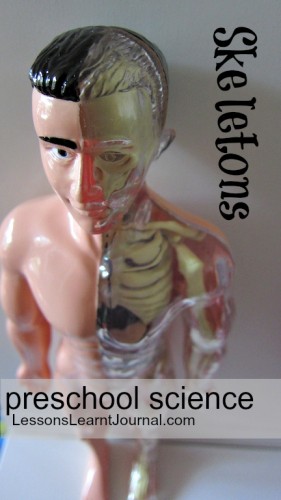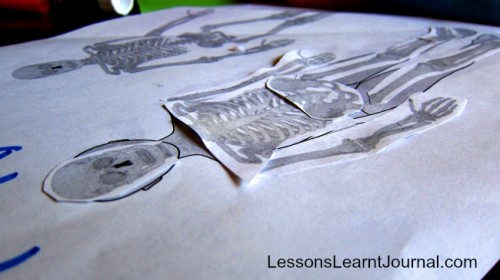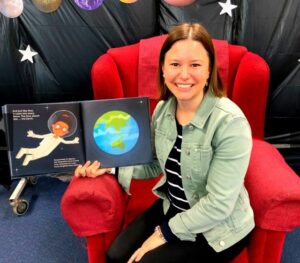Today I am very excited to share a guest post with you, Pauline from Lessons Learnt Journal. Be sure to visit her fabulous blog where you will find more fun activities and play ideas for kids.
After visiting the Skeleton Room of The Australian Museum , our boys have been fascinated with bones and skeletons. Following their lead, we plunged into some preschool science and introduced ourselves to the world of skeletons and bones.
Learning Outcomes
Young children should be able to identify the major bones and their functions:
• The skull protects the brain
• The ribcage protects the heart and lungs.
• The spine holds the body up.
Ways we can care for our bones include:
• Using protective gear like helmets, knee pads, elbow pads and wrist guards when playing sports.
• Eating calcium-rich foods (e.g. milk, cheese, dark leafy green vegetables) helps build bones and keep them strong.
• Vitamin D (from food and sunshine) helps the body absorb calcium.
• Regular exercise also helps keep bones healthy.
Suggested Learning Experiences
- A visit to a museum to look at bones. The best way to learn about bones is to see them (and if possible touch them). This allows students to observe, gather and synthesise new information for themselves.
- Put together a skeleton. Using a print out of a human skeleton, cut it into the main body parts (skull, ribcage, arms, legs, etc) and let children place the various parts together, naming each major part and its’ function.
Pauline is a Christian, Wife, Mother and Primary School Teacher. She lives in Sydney, Australia and has four children born within the tiny space of three and a half years. Visit her at Lessons Learnt Journal: enjoy working, resting and playing creatively with children. Follow along via Facebook Page and Pinterest Boards.




This is cool and a great way for kids to understand that bones are within us. Nice one Pauline!
thnks